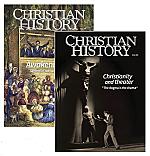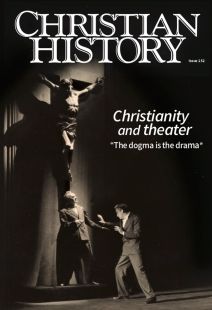Questions for reflection: Christianity and theater

[ABOVE: Comic Actor, Bronze and Silver Thymiaterion (Incense Burner), Roman, 1 to 50 AD—Mary Harrsch / [CC BY 4.0] Wikimedia ]
Here are a few questions to guide reflection on Christianity’s relationship with and response to the performing arts over the years.
1. What were Tertullian’s arguments against Christian participation in public “spectacles” (pp. 6–10)? Do these arguments apply to entertainment today? If so, how?
2. How has the Hebrew approach to drama (p. 10) influenced Christian attitudes?
3. What was something new or surprising you learned about medieval religious drama (pp. 12–16)?
4. How did the volatile religious environment of post-Reformation England affect theater (pp. 17–20)?
5. How do Christopher Marlowe and William Shakespeare invoke Christian themes in the play excerpts on p. 21?
6. How did William Prynne and James Buckley echo Tertullian’s and Augustine’s critiques about theater (pp. 22–24)? Given their arguments against it, how would you defend Christian participation in drama?
7. In what ways did revival preachers utilize dramatic elements in their sermons (p. 25)? Should preachers today be just as “theatrical”? Why or why not?
8. Regardless of Charles Dickens’s original intentions, is A Christmas Carol Christian (p. 28)? Why or why not?
9. Why do you think the MacDonald family’s chamber dramas (pp. 29–30) so strongly affected the lives of the family and audience?
10. How did British pageants bring the local community together (p. 31)? Can you think of any Christian-influenced events like this today that do something similar?
11. Consider the Christian, occultist, and modernist strands in twentieth-century theater (pp. 32–35). Compare and contrast how various Inklings pushed back against or blended these strains in their writing.
12. How does G. K. Chesterton’s Magic show the absurdity of disbelief (p. 36)?
13. Why are the Roman Catholic and Indigenous identities of Mexican Americans important (pp. 37–39)? How does this play out in Chicano theater?
14. What were the problems with The Green Pastures (pp. 40–41)? In what ways did drama by African American creators address these problems?
15. Which figure in the Gallery (pp. 42–45) most interested you? Why?
16. How does the drama of the liturgy in high church traditions involve the worshiper (p. 46)? Does your church tradition utilize drama in worship? How?
By The editors
[Christian History originally published this article in Christian History Issue #152 in 2024]
Next articles
Recommended resources: Christianity and theater
Read more about how Christians have participated in, created, and critiqued theater in these resources recommended by our authors and the CH team.
The editors and contributorsGlobal outpouring: Did you know?
Revivals of the nineteenth and twentieth centuries had global reach and impact
Chris Rogers and the editorsGlobal outpouring: Letters to the editor
Readers respond to Christian History
readers and the editorsSupport us
Christian History Institute (CHI) is a non-profit Pennsylvania corporation founded in 1982. Your donations support the continuation of this ministry
Donate






